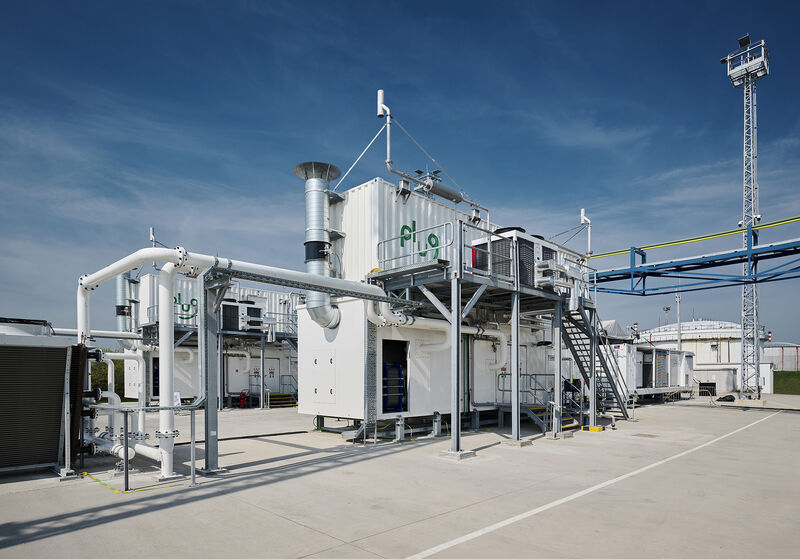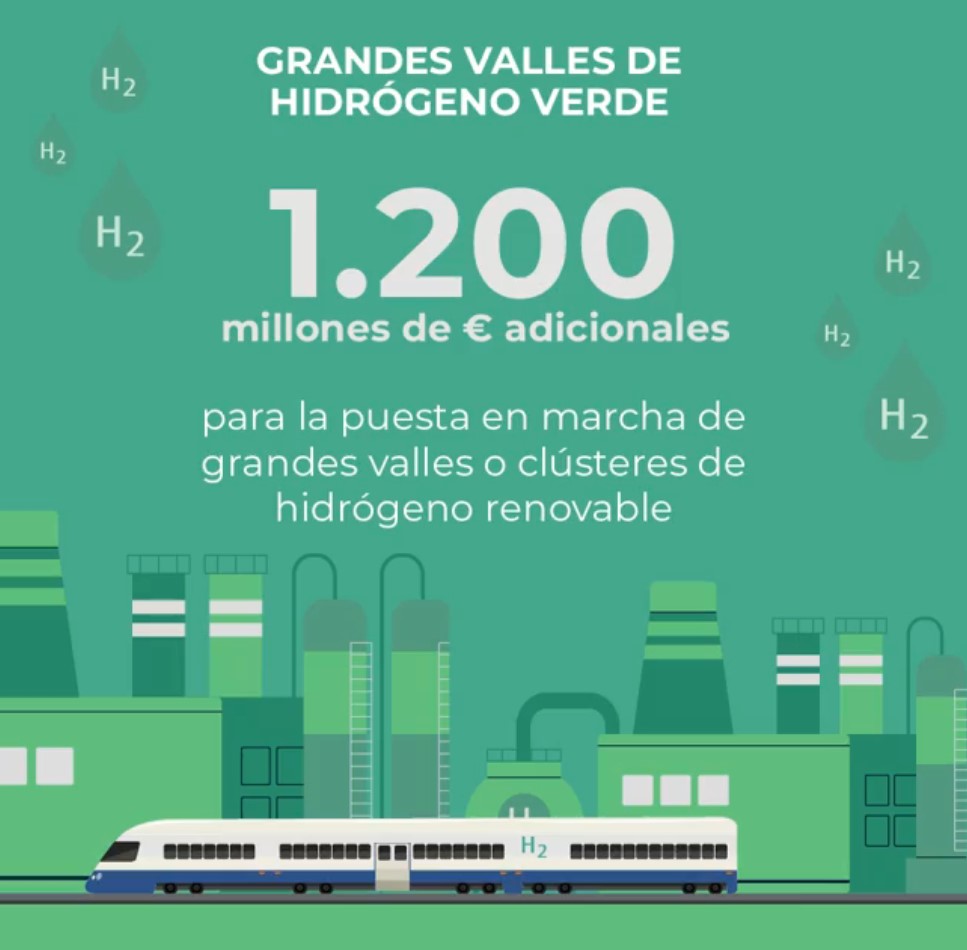When we talk about valleys, we see that there are many types of valleys, from the arid valleys of death to the fertile valleys that have nurtured civilisations. And now, in the energy field, we are also talking about ‘hydrogen valleys’, a concept that is gaining prominence in the transition.
The concept of the hydrogen valley has emerged as a key term in the discourse on the development of our sector, but its definition is often ambiguous and subject to various interpretations. This lack of clarity is mostly due to the nature of what a valley can represent, depending on the priorities and context of those who define it.
What is a Hydrogen Valley?
While there is no uniform definition, a hydrogen valley can be understood in different ways. Here are just a few examples.
- Infrastructure concentration: For some, a hydrogen valley is simply a region where various hydrogen-related facilities, such as hydrogen production plants, storage infrastructure, and refuelling stations for transport, are concentrated. This approach focuses on the creation of a ‘hub’ where the necessary infrastructure for the use of hydrogen as an energy carrier is brought together.
- Integrated ecosystems: for others, hydrogen valleys are much more complex and holistic ecosystems. These ecosystems include not only the physical infrastructure, but also the integration of all elements of the hydrogen value chain: from generation and storage to distribution and consumption. In this model, a hydrogen valley becomes a platform for innovation, where new technologies and business models that drive the energy transition are developed and tested.
- Strategic development zones: In other cases, hydrogen valleys are conceived as strategic economic and environmental development zones, where public policies are deployed and investments channelled to stimulate the local economy and reduce carbon emissions. Here, hydrogen is seen not only as an energy carrier, but also as an engine for industrial growth and economic regeneration.
In one of those conversations over coffee with colleagues in the sector, it was recently heard how the lack of a clear definition in Spain was criticised, while in Europe, for some time now, it has been much clearer. The valley concept could simply be reduced to a large project with a single producer and consumer. While this is not necessarily negative for the development of the sector, it could distort our understanding of what a hydrogen valley should really be. The original idea of creating integrated and collaborative ecosystems could be compromised if projects focus more on individual scale than on creating synergies. This conceptual uncertainty can lead to confusion and uneven expectations among the different actors in the sector.
Hydrogen Valleys Call
In Spain, the concept of hydrogen valleys has once again gained relevance following the launch of the first call for the Incentive Programme for Renewable Hydrogen Production and Consumption Projects, on which we will focus in this article. This initiative, known as the ‘Hydrogen Valleys’ call, seeks to turn this concept into a concrete reality, creating ecosystems that integrate the production, distribution and consumption of hydrogen.
Up to date, we have seen several important grant programmes in the hydrogen sector. From the H2 Pioneers programme, for example, to support pilot projects, limited to a budget of €15 million per project or similarly, the Value Chain calls, to foster the integration of the hydrogen supply chain, also limited to €15 million.
The problem with these initiatives is that, with a limit of €15 million per project, it is very difficult for these projects to be truly profitable. The infrastructure needed to produce, store and distribute hydrogen on a scale that makes commercial sense often requires much larger investments.
Beyond Spain’s borders, in the European context, we have recently witnessed more interesting initiatives such as the European Hydrogen Bank. This 800 million fund has supported large projects, such as the Catalina project in Spain, which obtained an allocation of close to 250 million euros. Although these amounts are significant, there is a growing perception that even this funding may fall short as market needs and expectations evolve.

Illustration 1: Plug Power 5 MWe Electrolyser
It is in this context that the call for Hydrogen Valleys in Spain is presented as an unprecedented opportunity. With a total budget of 1,320 million euros, this initiative not only seeks to finance individual projects, but also to create real clusters. This call, due to its scope and ambition, not only far exceeds previous national but also European support, with the prospect of positioning Spain in Europe.
Furthermore, as we will see below, this new call for proposals is designed to place the emphasis for obtaining a high score largely on the economic criteria of the project submitted.
The call for applications
The main objective of this call is to encourage the large-scale deployment of renewable hydrogen in Spain through the creation of hydrogen valleys or clusters. The initiative is endowed with a total budget of 1,320 million euros, making it one of the largest grants in this sector in Europe.
Main Features of the Call
- Objective and beneficiaries: the call seeks to promote projects that integrate all stages of the renewable hydrogen value chain, from its production to its final use, including storage and distribution.
- Eligible actions: to be considered eligible, projects must have a minimum capacity of 100 MW of electrolysis. In addition, projects are allowed to include multiple locations within the same hydrogen valley, provided that they are no more than 100 km apart and that each location has a minimum capacity of 50 MW.
- Selection criteria: the selection of projects will be based on several criteria, with a predominant weight on economic (70 points), followed by environmental and socio-economic (20 points) and technical (10 points) criteria. This prioritises economic efficiency, ensuring that funds are allocated to projects that offer the best ratio in terms of installed capacity per aid requested.
- Obligations of the beneficiaries: the selected projects will have to comply with the constitution of guarantees (minimum of 20 million euros), and the demonstration of commitments to purchase the hydrogen produced for at least 60% of the production during the first 10 years.
- Deadline for implementation: The maximum time limit for the implementation of projects is three years from the granting of aid. The good news is that although penalties may be imposed, it could be delayed for up to a further 36 months.
A golden opportunity
The Hydrogen Valleys call is undoubtedly one of the most ambitious we have seen up to now, not only because of the size of the funding available, but also because of the way it is structured. With a budget of 1,320 million euros and the requirement for guarantees, it might appear to be designed to benefit only a few large companies that we can all think of. However, despite these initial perceptions, this call should not be seen as an exclusive opportunity for the few, but rather as an opportunity window for any company willing to take up the challenge. The main reason is that a large part of the project evaluation is in the hands of the companies themselves. With 70% of the scoring based on economic criteria, companies have significant control over their success in the call, plus the fact that several large companies already have projects awarded with grants that cannot overlap. This approach allows companies submitting economically viable and well-structured projects to compete effectively, irrespective of their size.
At AtlantHy we see this call as an extraordinary opportunity. The magnitude of the support available, together with the deadlines make this call not only attractive, but also strategic for any company wishing to position itself in Spain and Europe.
We encourage you to listen to Episode 72 of our podcast: Public funding with Natalia Saiz and Laura Delgado (Deloitte) to find out more about these calls for proposals.
Don’t forget that at AtlantHy we are a very successful company in the presentation of grants for renewable fuel projects, with a success rate of over 80%.
Don’t hesitate to contact us to get your project off the ground with the H2 Valleys call for proposals!
If you enjoyed this article, stay tuned for more learning in part two, where we will analyse the results… Follow us on AtlantHy Academy!
We stay tuned!
